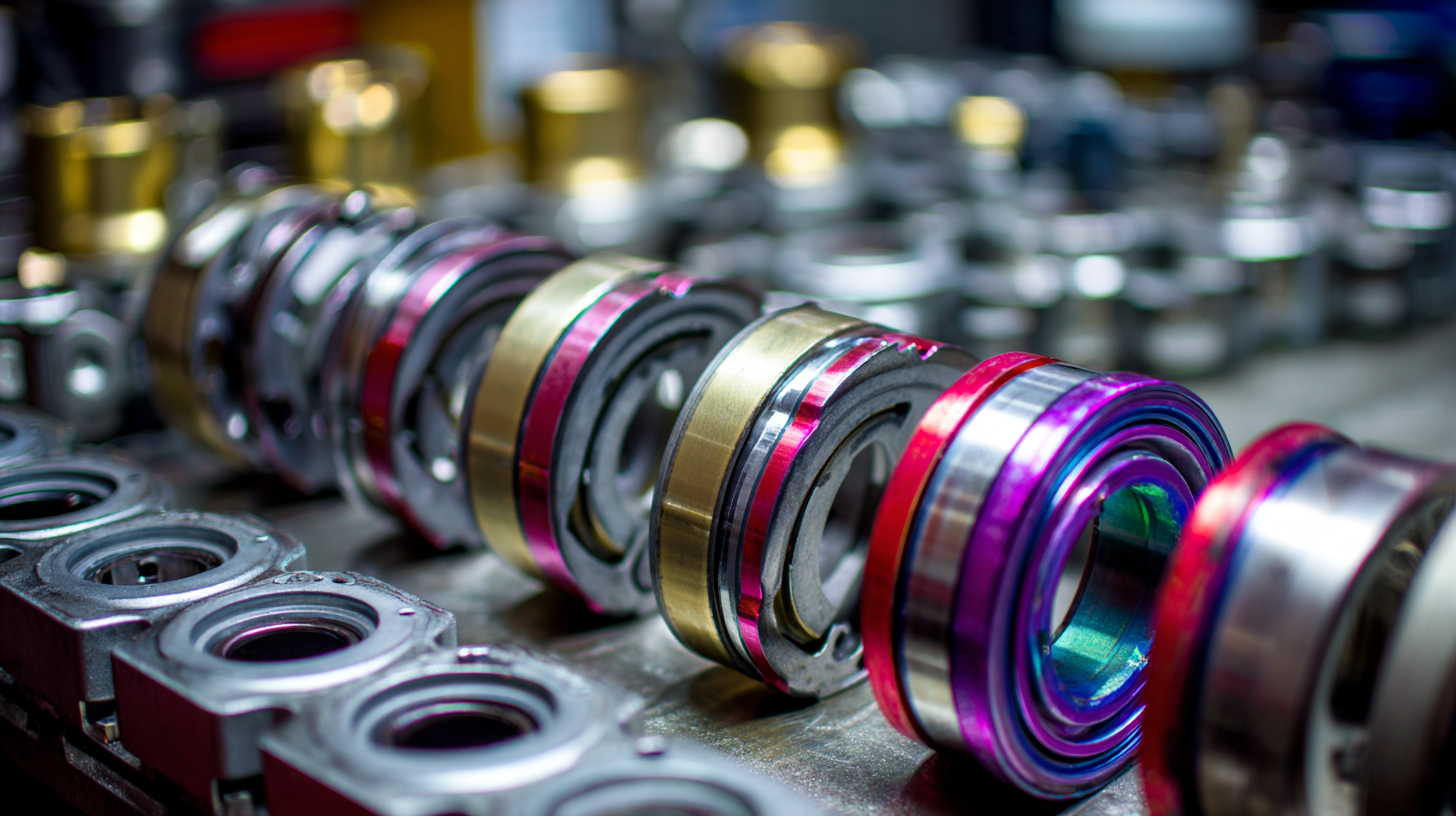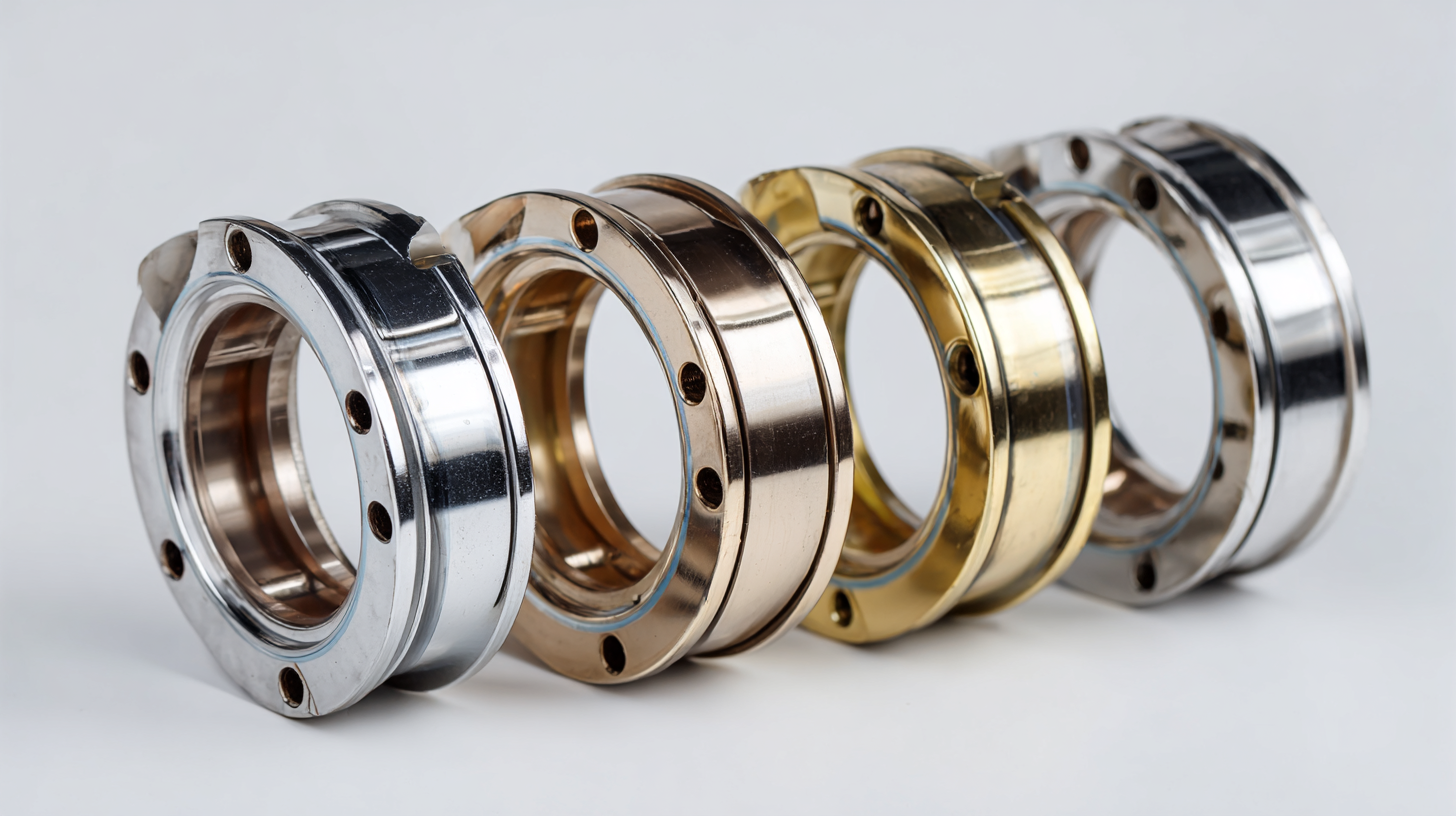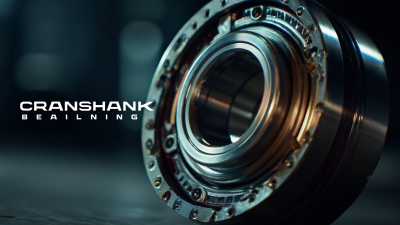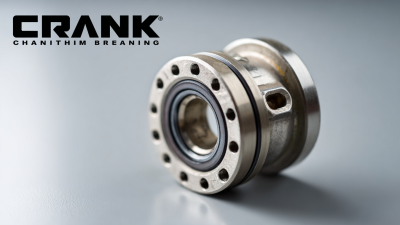 +86 13794985240
+86 13794985240
Leave Your Message
-
 CONTACT NUMBER
CONTACT NUMBER -
 CONTACT NUMBER
CONTACT NUMBER -
 CONTACT NUMBER
CONTACT NUMBER



 When upgrading an engine, the selection of the right crankshaft bearing is crucial to ensure optimal performance and longevity. A report from the Engine Manufacturers Association (EMA) indicates that improper bearing selection can lead to increased friction, excessive wear, and ultimately engine failure. In fact, studies show that nearly 60% of engine failures are attributed to bearing-related issues. Choosing the correct crankshaft bearing involves understanding various factors such as material composition, clearance specifications, and load capacities that can significantly affect engine efficiency and reliability. With advancements in bearing technology, there are now options that provide enhanced durability and improved lubrication, making it essential for enthusiasts and professionals alike to make informed decisions. This guide will explore the key considerations in selecting the appropriate crankshaft bearing for your specific engine upgrade, ensuring that you achieve the desired performance while safeguarding your investment.
When upgrading an engine, the selection of the right crankshaft bearing is crucial to ensure optimal performance and longevity. A report from the Engine Manufacturers Association (EMA) indicates that improper bearing selection can lead to increased friction, excessive wear, and ultimately engine failure. In fact, studies show that nearly 60% of engine failures are attributed to bearing-related issues. Choosing the correct crankshaft bearing involves understanding various factors such as material composition, clearance specifications, and load capacities that can significantly affect engine efficiency and reliability. With advancements in bearing technology, there are now options that provide enhanced durability and improved lubrication, making it essential for enthusiasts and professionals alike to make informed decisions. This guide will explore the key considerations in selecting the appropriate crankshaft bearing for your specific engine upgrade, ensuring that you achieve the desired performance while safeguarding your investment.
When upgrading an engine, selecting the right crankshaft bearing is crucial for achieving optimal performance. There are various types of crankshaft bearings available, each designed for specific applications and performance demands. For instance, high-performance bearings often provide enhanced durability and reduced friction, essential for engines with increased power outputs. However, these bearings may sacrifice some level of cushioning and noise-damping features found in standard OEM options. Understanding the pros and cons of different bearing types is vital for customization, as the right choice can significantly impact engine efficiency and longevity.
Innovative advancements in crankshaft designs have also led to a broader range of bearing applications. As engine demands evolve, manufacturers are focused on creating specialized bearings that can withstand higher RPMs and increased boosts, thereby catering to a variety of engine builds, from street cars to high-performance machines. Moreover, the process of balancing the crankshaft is equally important, influencing how effectively the engine can utilize its power. Properly balanced crankshafts paired with the right bearings can lead to smoother operation and enhanced performance, highlighting the critical role that crankshaft bearings play in engine upgrades.
 When choosing the right crankshaft bearing for your engine upgrade, several key factors come into play, primarily size, material, and load ratings. The size of the bearing must match the specifications of your crankshaft and engine block to ensure proper alignment and clearance, which directly affects performance and longevity. Recent industry reports indicate that a significant portion of engine failures can be traced back to improper bearing selection, underscoring the importance of precise measurements.
When choosing the right crankshaft bearing for your engine upgrade, several key factors come into play, primarily size, material, and load ratings. The size of the bearing must match the specifications of your crankshaft and engine block to ensure proper alignment and clearance, which directly affects performance and longevity. Recent industry reports indicate that a significant portion of engine failures can be traced back to improper bearing selection, underscoring the importance of precise measurements.
The material of the bearing also plays a crucial role. Options typically include various alloys, each designed to handle different levels of stress and heat. For instance, high-performance engines often utilize bearings made of materials that provide increased durability and lower thermal expansion, thus enhancing operational efficiency. In a market analysis, it was noted that bearings made from advanced composites are gaining traction, providing enhanced resistance to wear and better load distribution.
Tips: Always refer to the engine manufacturer’s specifications for compatibility, as this will guide you in selecting a bearing that can withstand the intended power levels. Additionally, consider the load ratings of the bearings; selecting ones with higher load capacities can prevent premature failure, especially in high-performance applications. Regular maintenance and inspections are also recommended to catch any early signs of wear before they lead to larger issues.
When upgrading your engine, selecting the right crankshaft bearing is crucial for optimal performance and longevity. Compatibility is a key factor to consider, as bearings must align precisely with the engine's specifications. For instance, in the case of diesel engines like the 1HZ, understanding the specific tolerances and dimensions of bearings is imperative, especially when integrating components such as turbo kits that demand additional strength and durability.
Moreover, different engine models, such as the Honda K-Series or GM's 2.2L engine, have distinct bearing selection processes. By following a systematic approach, including reference charts and technical guidelines, you can ensure that the bearings used will withstand the unforeseen stresses of higher performance scenarios. This compatibility check not only enhances engine reliability but is essential for achieving the desired power gains without compromising the integrity of other engine components.
When upgrading your engine, choosing the right crankshaft bearing is critical for optimizing performance and ensuring longevity. The quality of the bearing directly impacts how well the engine functions. High-quality bearings reduce friction, enhance lubrication, and withstand higher temperatures, all of which lead to greater efficiency. Engines equipped with superior bearings can maintain their performance over extended periods, ultimately translating into savings on maintenance costs and downtime.
Tips: When selecting crankshaft bearings, look for materials that offer excellent fatigue resistance and thermal stability. Consider bearings that utilize advanced coatings or treatments to further minimize wear. Additionally, ensure that the bearing's specifications match your engine's requirements to avoid compatibility issues, which could compromise performance.
Moreover, consider the engine’s application; for high-performance builds, investing in premium bearings can make a significant difference. These bearings are often engineered to bear higher loads and temperatures, allowing for a powerful and durable engine setup. Remember, while it might be tempting to opt for cost-effective options, the long-term benefits of quality bearings can outweigh the initial expense.

When upgrading your crankshaft bearings, knowing how to install them correctly is crucial to ensure your engine operates smoothly. One common mistake is failing to properly clean the surfaces before installation. Dirt or debris can lead to improper seating, causing premature wear. Always ensure that both the crankshaft and bearing surfaces are meticulously cleaned with a suitable solvent before application.
Another frequent error involves overlooking the correct torque specifications for bearing caps. Using improper torque can lead to bearing distortion or uneven wear. It's essential to consult your engine’s service manual to confirm the manufacturer’s specifications and use a calibrated torque wrench during installation. Additionally, don’t forget to apply the appropriate assembly lubricant to the bearings before installation to prevent dry starts.
Lastly, many installers neglect to check for proper alignment. Misalignment can drastically affect the performance and lifespan of crankshaft bearings. Use a dial gauge to verify alignment and make any necessary adjustments before securing the bearings in place. By avoiding these common pitfalls, you can ensure a successful crankshaft bearing upgrade that maximizes your engine's performance.






